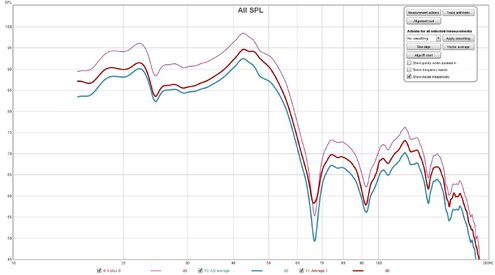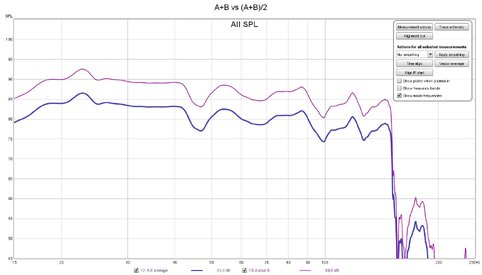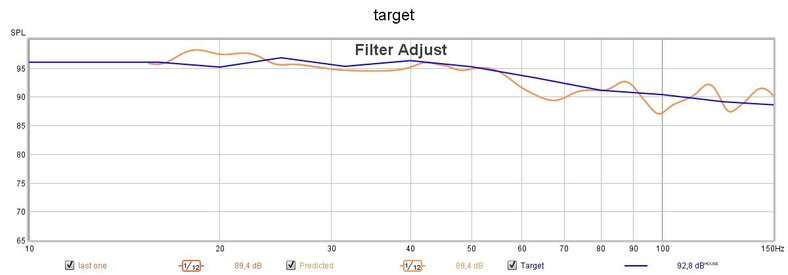jtalden
Senior Member
More
- Preamp, Processor or Receiver
- Marantz AV7705 Pre/Pro
- Main Amp
- VTV 6 chnl NC252MP P-amp x 2
- Additional Amp
- Behringer DCX2496 x 2
- Universal / Blu-ray / CD Player
- OPPO BDP-103 Universal Player
- Front Speakers
- DIY SEAS H1456/H1212 Spkr x 5
- Subwoofers
- DIY JBL 2235H 15" SW x 2
- Screen
- Da-Lite Da-Snap 39105V - 92"
- Video Display Device
- JVC DLA-X790R
Before I put these tests to rest I'd like to share some (probably very uncommon) facts I encountered yesterday.
1. EQ experiment
I tried to boost 63 and 80 Hz at the FR I posted in post #70. I did three tests with Q1 Q2,5 and Q5 on both front subs.
The result was even bigger peak at 45 Hz. I find this very weird.
I don't follow. I recommend that once you decide a favorable 4 SWgroup setting than no further changes should be made to the individual SWs (no EQ or gain changes). Use REW EQ panel on the 4 SWgroup measurement to determine PEQ settings. Then apply those EQs to all 4 SW individually. The new 4 SWgroup measurements will match the predicted response in the REW EQ panel.
2. Location experiment
Now, time for some heavy lifting. I moved front subs to a new place and re-measure them. Turned out their response is quite good - way better than before. I used delay to time align them with mains. To get even nicer align I changed phase on one sub as well. Both needed reversed polarity. IR graph is now perfect.
But when both subs were measured with mains - the FR is very bad.
@jtalden , when you'll have some spare time, would you please care too look and make a comment? This could look as a phase issue ...
I suggest you measure the setups I recommended above to see if they meet you needs. You will get the same SPL response shown above if the settings are correctly applied. PEQ to can be used as needed for fine tuning on the SWgroup.












 !
!






